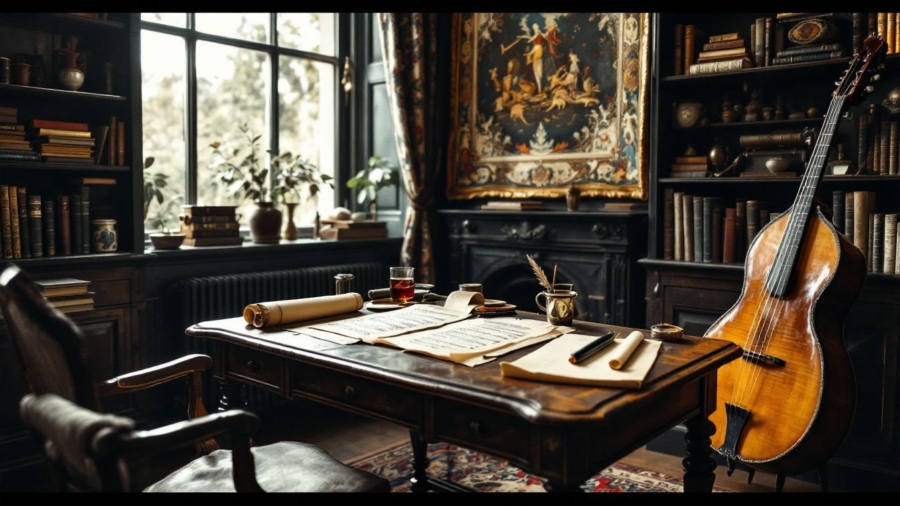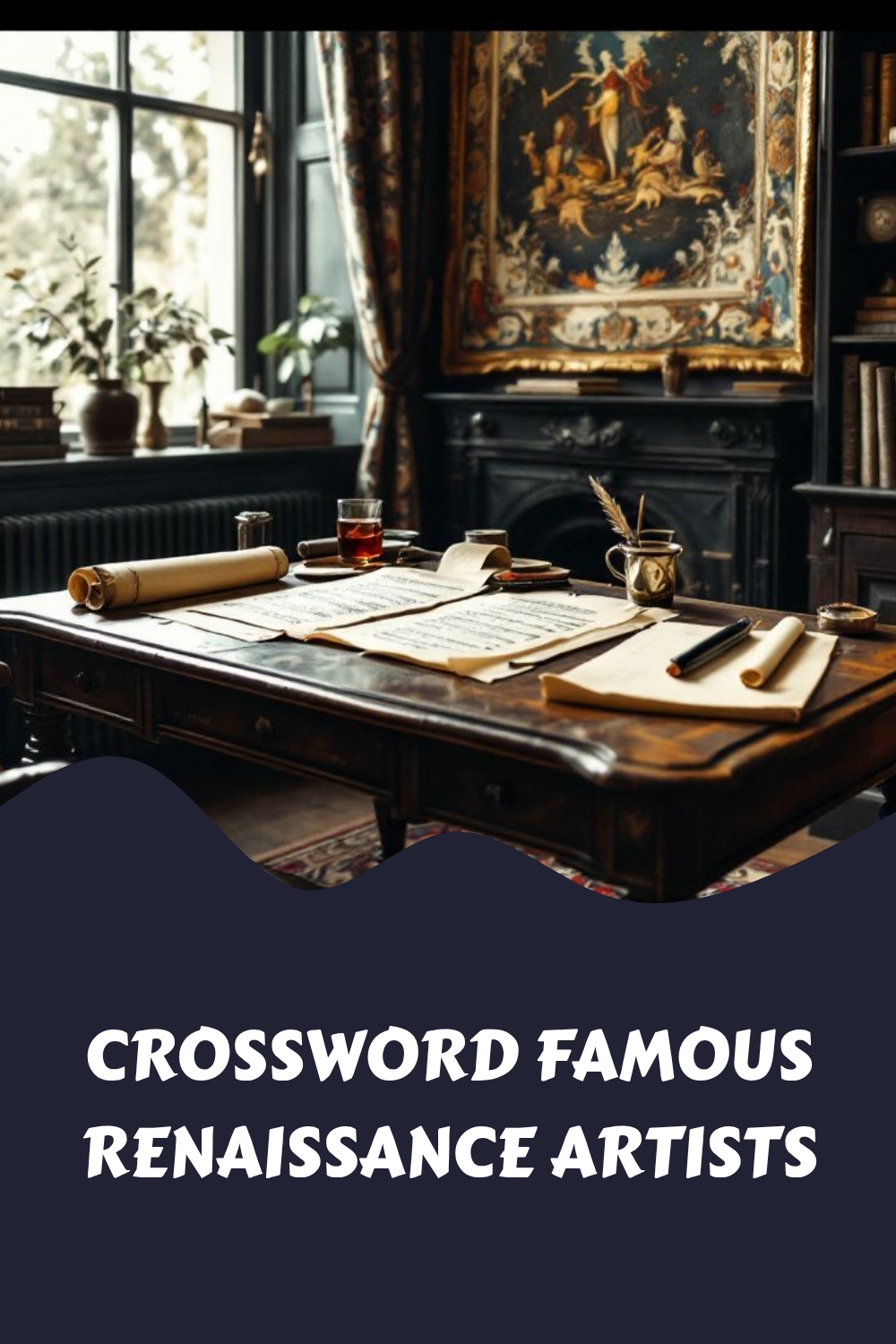Renaissance Artists Study Guide
Quiz Renaissance Artists
- What is the Renaissance best known for, and how did it change Europe beyond art?
- Explain the concept of humanism as it emerged during the Renaissance, contrasting it with the dominant mindset of the Middle Ages.
- What does the term “Renaissance” literally mean, and what specific values of the ancient world were being reborn during this period?
- Describe the “contrapposto” pose seen in ancient Greek sculpture and explain its significance in portraying the human body.
- How did Renaissance artists draw inspiration from classical art, providing at least two specific examples discussed in the source material?
- Identify at least two key advancements or innovations that occurred during the Renaissance in areas beyond art, as highlighted in the discussion.
- Explain how Renaissance Artists used the depiction of female figures (“Venuses”) evolved from prehistoric times through the Greek and medieval periods, leading up to the Renaissance.
- Contrast Donatello’s early Renaissance statue of David with Michelangelo’s High Renaissance version in terms of their artistic expression and the spirit of their respective eras.
- Discuss the shift towards realism in Renaissance art by comparing and contrasting medieval artistic styles with the techniques employed by early Renaissance painters like Giotto.
- How did the invention of the printing press and the actions of figures like Martin Luther contribute to the broader impact and spread of Renaissance ideas?
Quiz Answer Key the Renaissance Artists
- The Renaissance is best known for its art, but it fundamentally changed Europe in every way, including politics, economics, and religion. Most importantly, it ushered in a new attitude toward life characterized by optimism and confidence.
- Humanism focused on the essential goodness and potential of humanity, a departure from the Middle Ages’ emphasis on human sinfulness. During the Renaissance, people embraced working hard, making money became respectable, and individual excellence was celebrated.
- “Renaissance” means “rebirth.” This period saw a revival of the values of the ancient world, particularly those of ancient Greece and Rome, including their art, philosophy, and architectural styles.
- The contrapposto pose is a natural stance where the weight rests on one leg, creating a balanced asymmetry in the body. It was significant because it conveyed a sense of naturalism, balance, and potential motion in human figures, reflecting Greek ideals of harmony.
- Renaissance artists turned to ancient Greek and Roman works for inspiration in various ways. For example, Renaissance portrayals of the Three Graces were directly inspired by ancient versions, and Renaissance architects revived ancient Greek columns and Roman arches in their designs.
- Beyond art and the Renaissance Artists, the Renaissance saw the development of modern capitalism with advancements in banking and loans, as well as significant strides in science as individuals delved into the study of nature. The era also saw the beginnings of democratic ideals, with a focus on “people power.”
- Prehistoric Venus figurines were likely fertility symbols emphasizing life-giving traits for survival. Greek goddesses evolved to represent societal ideals of balance and victory. In the Middle Ages, the Virgin Mary became a central figure embodying compassion and purity. The Renaissance brought a shift towards more secular depictions, with goddesses like Venus being “brought down from heaven” and portrayed with a new humanistic realism.
- Donatello’s David, an early Renaissance bronze nude, embodies a fresh and brash spirit, celebrating the human body in a way that broke from medieval conventions. Michelangelo’s High Renaissance David is a larger, more confident figure, gazing towards the future and symbolizing the era’s heightened sense of human potential and achievement.
- Medieval art often featured flat, two-dimensional representations with little sense of depth, primarily focused on conveying biblical narratives in a symbolic manner. Early Renaissance Artists like Giotto pioneered techniques to create spacious, three-dimensional scenes with realistic figures, marking a significant evolution towards naturalism by applying principles of art, science, and math.
- The invention of the printing press by Gutenberg allowed for the mass production and affordable distribution of texts, including new ideas and interpretations of classical works, significantly expanding literacy. Martin Luther’s radical religious ideas, amplified by the printing press, challenged established norms and contributed to a spirit of questioning and change that aligned with the Renaissance’s humanistic values.
Essay Format Questions
Analyze the claim that the Renaissance served as a “linchpin of History,” connecting the past with the future. Discuss specific examples of how the Renaissance inherited from previous eras and laid the groundwork for the modern world in various fields such as art, politics, economics, and science.
Compare and contrast the artistic and cultural values of the Middle Ages and the Renaissance, using specific examples of art, architecture, and societal attitudes discussed in the source material. How did the shift in focus from the divine to the human impact European society?
Discuss the concept of humanism as the core of the Renaissance. How did this philosophy manifest itself in the art, literature, and scientific advancements of the period? Use specific examples to illustrate the key tenets of humanism and its influence on European thought.
Trace the evolution of the representation of the human figure in European art from ancient Greece through the Renaissance, focusing on the changing ideals of beauty, realism, and symbolism. Analyze how key works like the Venus de Milo, medieval depictions of Mary, Botticelli’s Birth of Venus, and Michelangelo’s David reflect the values of their respective eras.
Explore the idea that art serves as a reflection of its time. Analyze how the artworks and artistic movements discussed in the source material, from the Renaissance to the modern era, illustrate the social, political, and cultural shifts that occurred in Europe. Consider the role of patronage, technological advancements, and evolving societal values in shaping artistic expression.
Glossary of Key Terms
Renaissance: A period in European history, roughly from the 14th to the 16th century, characterized by a renewed interest in classical art, literature, and learning, marking a transition from the Middle Ages to the Early Modern period. Literally meaning “rebirth.”
Humanism: A philosophical and ethical stance that emphasizes the value and agency of human beings, individually and collectively, and generally prefers critical thinking and evidence over dogma or superstition. A key intellectual movement of the Renaissance.
Classical Art: Art and architecture inspired by the styles and ideals of ancient Greece and Rome, emphasizing balance, harmony, and idealized forms.
Contrapposto: An Italian term that describes a naturalistic pose in sculpture and painting in which a figure’s weight is shifted onto one leg, causing the hips and shoulders to tilt in opposite directions, creating a sense of movement and balance.
Fresco: A technique of mural painting executed upon freshly laid (“wet”) lime plaster. Water is used as the vehicle for the pigment to merge with the plaster, and with the setting of the plaster, the painting becomes an integral part of the wall.
Tempera: A painting medium in which the pigments are bound in a water-soluble emulsion such as egg yolk.
Triptych: An artwork consisting of three panels hinged together so it can be closed or displayed open. Common in medieval and Renaissance art.
Baroque: An artistic style of the 17th and early 18th centuries characterized by dramatic movement, bold colors, and ornate detail.
Realism (in Art): An artistic movement or style that attempts to represent subject matter truthfully, without artificiality, and avoiding speculative fiction and supernatural elements. Renaissance art saw a significant development towards realism.
Medium (in Art): The material or technique with which an artist works (e.g., oil paint, sculpture in marble, fresco painting).


 Cart is empty
Cart is empty 

